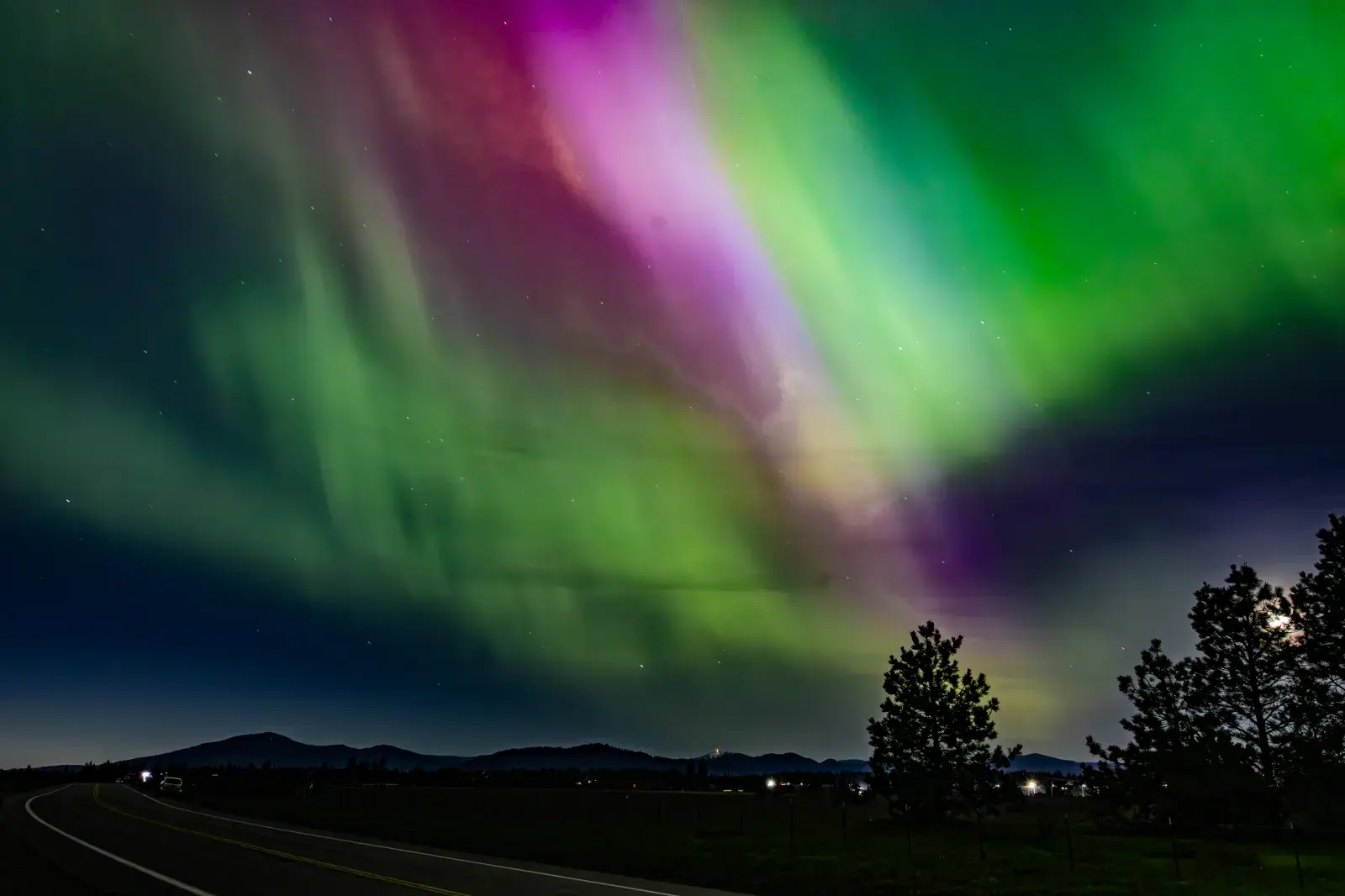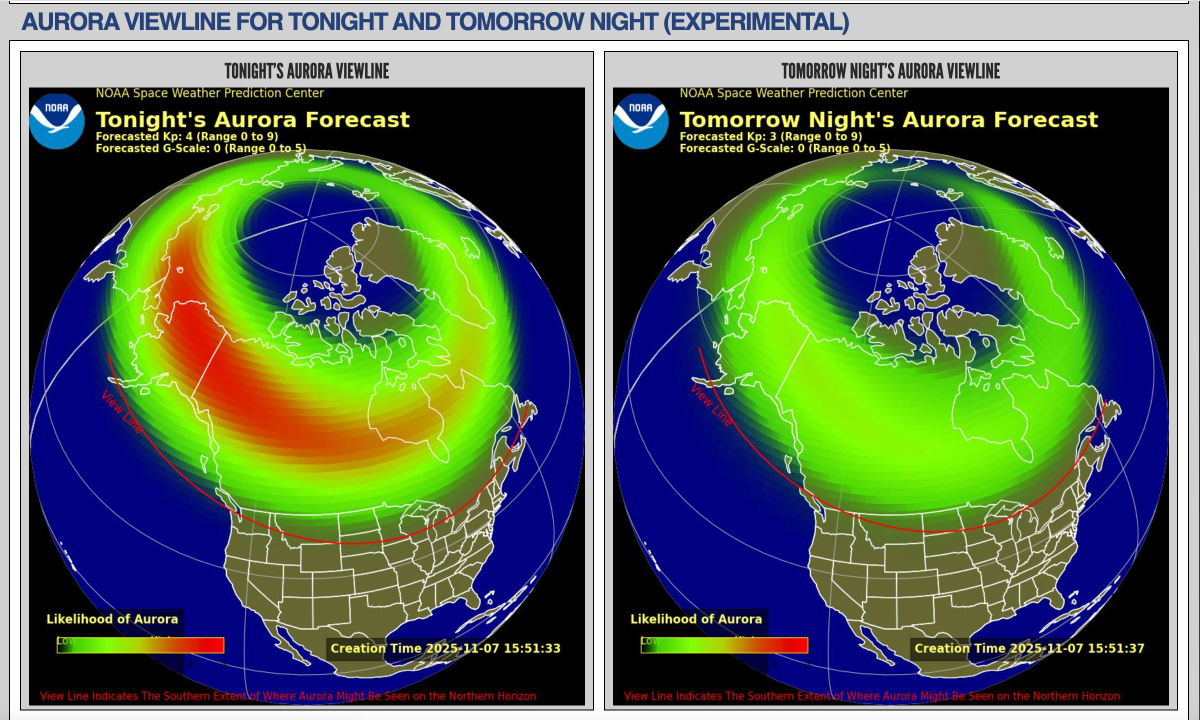A natural display of solar particles is expected to illuminate the skies with a colorful display on Friday night with a “moderate-strong” geomagnetic storm expected to hit.
The aurora borealis, or the northern lights, could become visible in several U.S. states according the the National Oceanic and Atmospheric Administration (NOAA)’s Space Weather Prediction Center (SWPC)—who have announced a geomagnetic storm watch for November 7 and 8.
Several states appear above the view line for the aurora—light displays created when energetic particles from the sun interact with Earth’s magnetic field and atmosphere—on the forecast map.
The states the aurora could become visible from include Alaska, Montana, North Dakota, Minnesota, Maine, Washington, Idaho, South Dakota, Wisconsin, Michigan and New York.

“Coronal mass ejections (CME) are eruptions of solar material and strong magnetic fields. When they arrive at Earth, a geomagnetic storm can result. Watches at the G3 level are infrequent, but not uncommon,” NOAA said in a statement.
“Two notable CMEs erupted from the sun on 5 November, both associated with solar flare activity from Region 4273 [an active region on the sun].
“The first CME is anticipated to reach Earth with a partial impact later 6 Nov on into 7 Nov. The second CME is expected to arrive on 8 Nov, with less impact, in part due to slower movement.
“Actual geomagnetic responses depends upon the intensity and orientation of the embedded magnetic field. If CMEs arrive with favorable fields, the potential exists for Moderate-Strong Storm levels.”

The aurora offers people a chance to experience space weather and can often be observed at points from Earth from just after sunset or just before sunrise.
The aurora does not need to be directly overhead but can be observed from as much as 1000 km away when the aurora is bright and if conditions are right, according to the NOAA.
The lights are not visible during daylight hours.
Do you have a tip on a science story that Newsweek should be covering? Do you have a question about the aurora? Let us know via science@newsweek.com.

